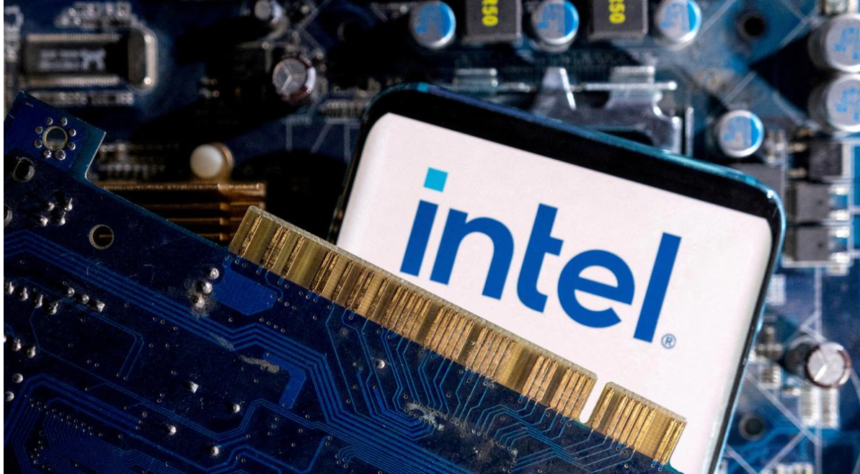In a significant development, the European Union’s top court, the Court of Justice of the European Union (CJEU), has ruled in favor of Intel, bringing an end to a two-decade-long antitrust case against the U.S.-based chipmaker. This ruling marks a pivotal moment in EU competition policy, as it not only absolves Intel of wrongdoing but also raises questions about the EU’s approach to regulating dominant players in the technology sector. The decision has garnered attention for its potential impact on future antitrust cases and for the broader implications on innovation, market competition, and regulatory practices within the EU.
This ruling is not just a win for Intel, but it also signals a shift in how courts may interpret the actions of major corporations in competitive markets, particularly those involving incentives and discounts. This article explores the key aspects of the Intel case, the details of the EU’s antitrust accusations, the court’s decision, and its broader implications on competition law within the European Union.
1. The Origins of the Intel Antitrust Case
The origins of the Intel antitrust case date back to the early 2000s, a period when Intel was one of the leading global manufacturers of microprocessors. The European Commission, the executive arm of the EU responsible for enforcing competition laws, launched an investigation into Intel’s business practices, particularly concerning its relationships with major computer manufacturers. 
The Commission alleged that Intel had abused its dominant position in the market for x86 processors by offering rebates and incentives to original equipment manufacturers (OEMs) like Dell, HP, and Lenovo. According to the Commission, these financial incentives were contingent upon the condition that these companies source the majority, if not all, of their processors from Intel, thereby creating an unfair advantage over its main competitor, AMD (Advanced Micro Devices). The Commission argued that Intel’s tactics effectively suppressed competition by limiting AMD’s access to key customers, ultimately stifling consumer choice and innovation in the sector.
2. The 2009 Fine and Intel’s Response
In 2009, the European Commission fined Intel a record-breaking €1.06 billion (approximately $1.2 billion at the time), accusing the company of anticompetitive behavior that violated EU competition laws. The fine marked one of the largest penalties imposed by the EU on a single company, reflecting the seriousness of the allegations. The Commission held that Intel’s practices created an exclusionary effect, harming AMD’s ability to compete in the market and depriving consumers of potential benefits.
Intel challenged the Commission’s decision, arguing that the rebates and incentives it offered were standard practices in a competitive market and that they did not have an exclusionary impact on AMD. Intel contended that its discounts were based on legitimate business goals aimed at rewarding customer loyalty and maximizing efficiency, not at stifling competition. The company maintained that its practices were neither unusual nor harmful to the broader market, prompting Intel to appeal the fine in an effort to overturn the Commission’s decision. 
3. The EU General Court’s Role and Intel’s Legal Journey
Intel’s appeal led the case to the EU’s General Court, which initially upheld the European Commission’s decision in 2014. The General Court’s judgment was based on an analysis of the economic effects of Intel’s rebate practices, concluding that they created an exclusionary effect in the market, limiting AMD’s ability to compete effectively. However, Intel did not back down, further appealing to the EU’s highest court, the Court of Justice of the European Union.
In 2017, the CJEU issued a landmark judgment that criticized the General Court’s decision, noting that it had failed to assess whether Intel’s rebates had genuinely restricted competition. The CJEU emphasized the need for a more comprehensive examination of the actual effects of Intel’s conduct on the market and sent the case back to the General Court for reconsideration. This move highlighted the importance of economic analysis in competition cases, especially in assessing whether certain practices lead to actual harm to competition.
4. The Final Ruling: A Landmark Decision in Favor of Intel
In September 2024, the General Court, following the guidance provided by the CJEU, ruled in favor of Intel, ultimately bringing an end to the nearly two-decade-long case. The court concluded that the European Commission had not sufficiently demonstrated that Intel’s rebate practices created an anticompetitive effect in the market. This ruling effectively nullifies the €1.06 billion fine, providing Intel with a significant legal victory and underscoring the importance of rigorous economic analysis in determining the impact of business practices on competition.
The court’s decision rested on a critical interpretation of the “as-efficient competitor” test, which assesses whether a competitor as efficient as the dominant firm could remain competitive despite the rebates or discounts offered. In Intel’s case, the court found that the Commission had not provided sufficient evidence to prove that AMD, an as-efficient competitor, was excluded from the market due to Intel’s rebates. This emphasis on economic analysis reflects a more nuanced approach to competition law, requiring regulators to demonstrate actual market harm rather than relying solely on the dominant position of a company.
5. Implications for EU Antitrust Policy and Future Cases
The ruling in Intel’s favor has far-reaching implications for EU antitrust policy, particularly for how cases involving rebates, discounts, and market dominance are assessed in the future. Here are some potential impacts:
- Shift Toward Economic Analysis: The court’s ruling emphasizes the importance of a detailed economic analysis when assessing the impact of certain practices on competition. Future cases may require the Commission to provide clear evidence of anticompetitive effects, particularly when rebates or discounts are involved.
- Higher Burden of Proof for the European Commission: The ruling raises the standard of proof required from the Commission in establishing anticompetitive behavior, especially in cases involving dominant companies. The Commission may need to substantiate its claims with concrete evidence of harm to competitors or consumers.
- Potential Reassessment of Past and Ongoing Cases: The Intel ruling could prompt a reassessment of past antitrust cases where similar arguments around rebates and incentives were made. Companies previously penalized for similar practices may appeal their cases, citing the need for more rigorous economic scrutiny.
6. Broader Impact on the Technology Sector and Market Competition
The Intel ruling is especially relevant for the technology sector, where companies often leverage discounts, rebates, and partnerships to secure market share. In the context of a rapidly evolving market, such practices are not uncommon, particularly when it comes to high-tech products with complex supply chains and large-scale manufacturing.
For technology companies, the ruling may provide more leeway in offering incentives to customers, as long as they do not create an exclusionary impact on competitors. The ruling also underscores the need for balance between regulatory oversight and market dynamics, particularly in innovation-driven sectors where incentives are often tied to economies of scale and consumer choice.
7. Consumer Impact and Competitive Balance in the Market
While the Intel ruling may raise concerns about the potential for dominant companies to wield excessive influence in the market, it also benefits consumers by ensuring that regulatory intervention does not stifle competition unnecessarily. Rebates and incentives can lower prices and increase product accessibility, creating positive effects for consumers, provided they do not hinder other players from competing.
The court’s decision suggests that practices traditionally viewed as exclusionary, like rebates and loyalty discounts, may not be anticompetitive if they do not conclusively harm the market. For consumers, this means a more flexible competitive environment where companies can adopt strategies to gain market share without immediate regulatory repercussions.
8. Conclusion: A Turning Point for Antitrust Policy and Corporate Strategy
The EU’s decision to rule in Intel’s favor represents a landmark moment in competition law, challenging the traditional approach to antitrust cases and setting a precedent for future cases involving market-dominant firms. This ruling acknowledges the complexities of competitive strategies in high-stakes markets, especially when growth and innovation drive the behavior of dominant firms.
For Intel, the decision marks the end of a prolonged legal battle and validates its argument that its practices were standard industry strategies rather than attempts to exclude competition. For the European Commission, the ruling may prompt a reconsideration of how competition law is enforced, potentially paving the way for reforms that balance market competition with the need for innovation.
As Europe’s top court reinforces the necessity for thorough economic analysis in competition cases, this ruling could shape the landscape of corporate strategy in the technology sector. It stands as a testament to the evolving nature of competition law, one that recognizes the complexities of global markets and the importance of fair competition in driving technological progress and consumer welfare. ALSO READ:-President Muizzu Announces 50% Salary Cut Amid Worsening Financial Crisis in the Maldives 2024





